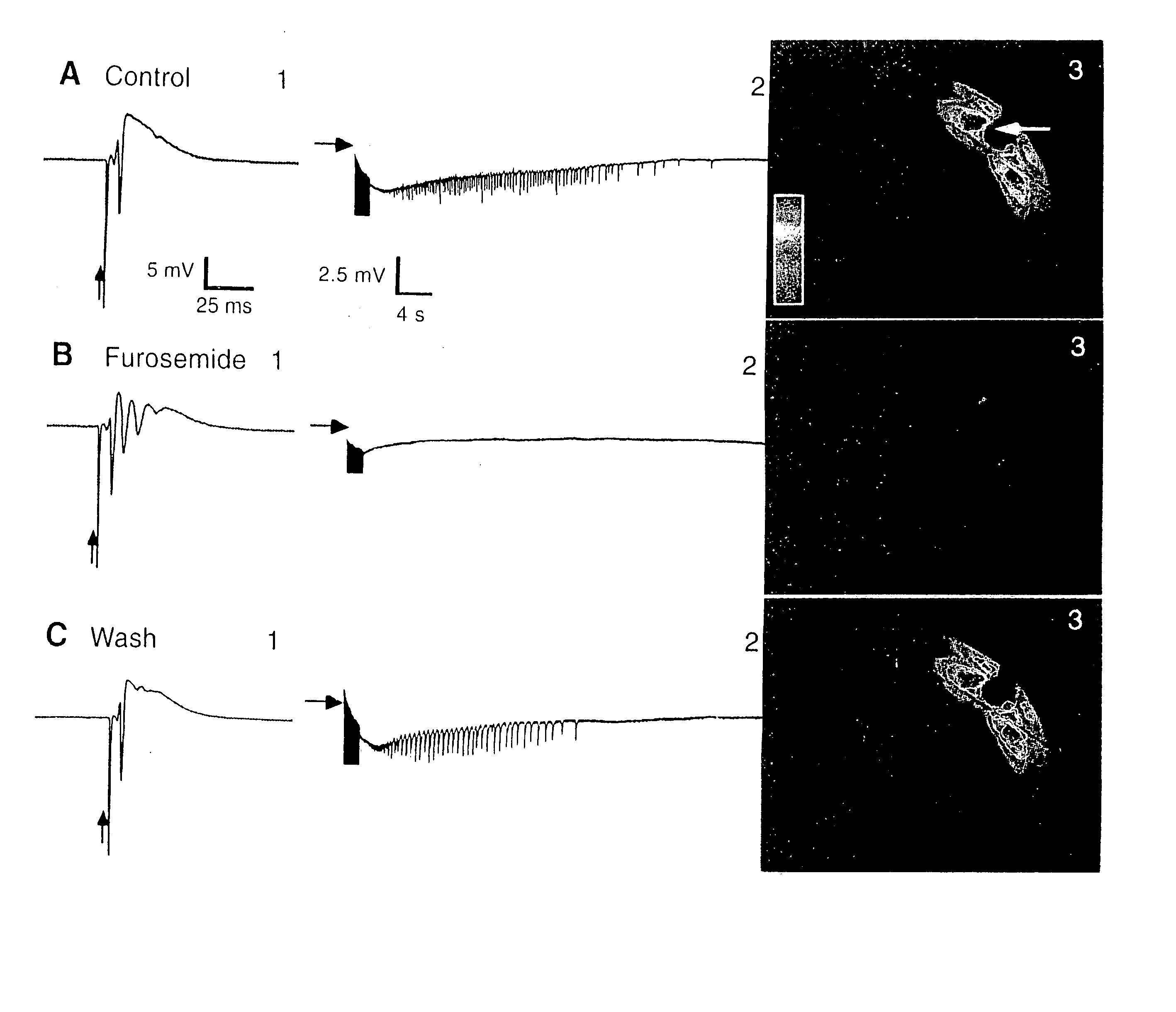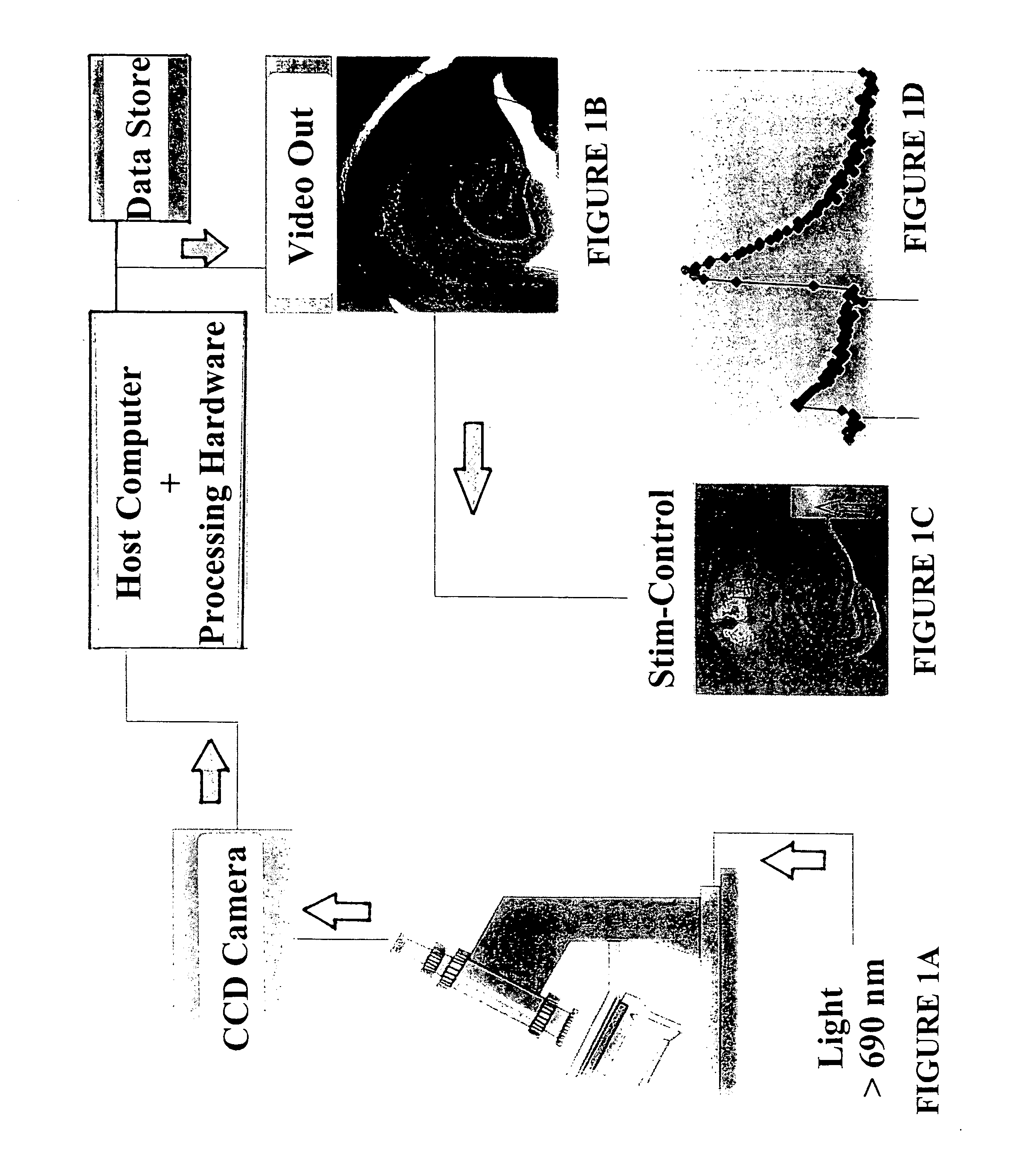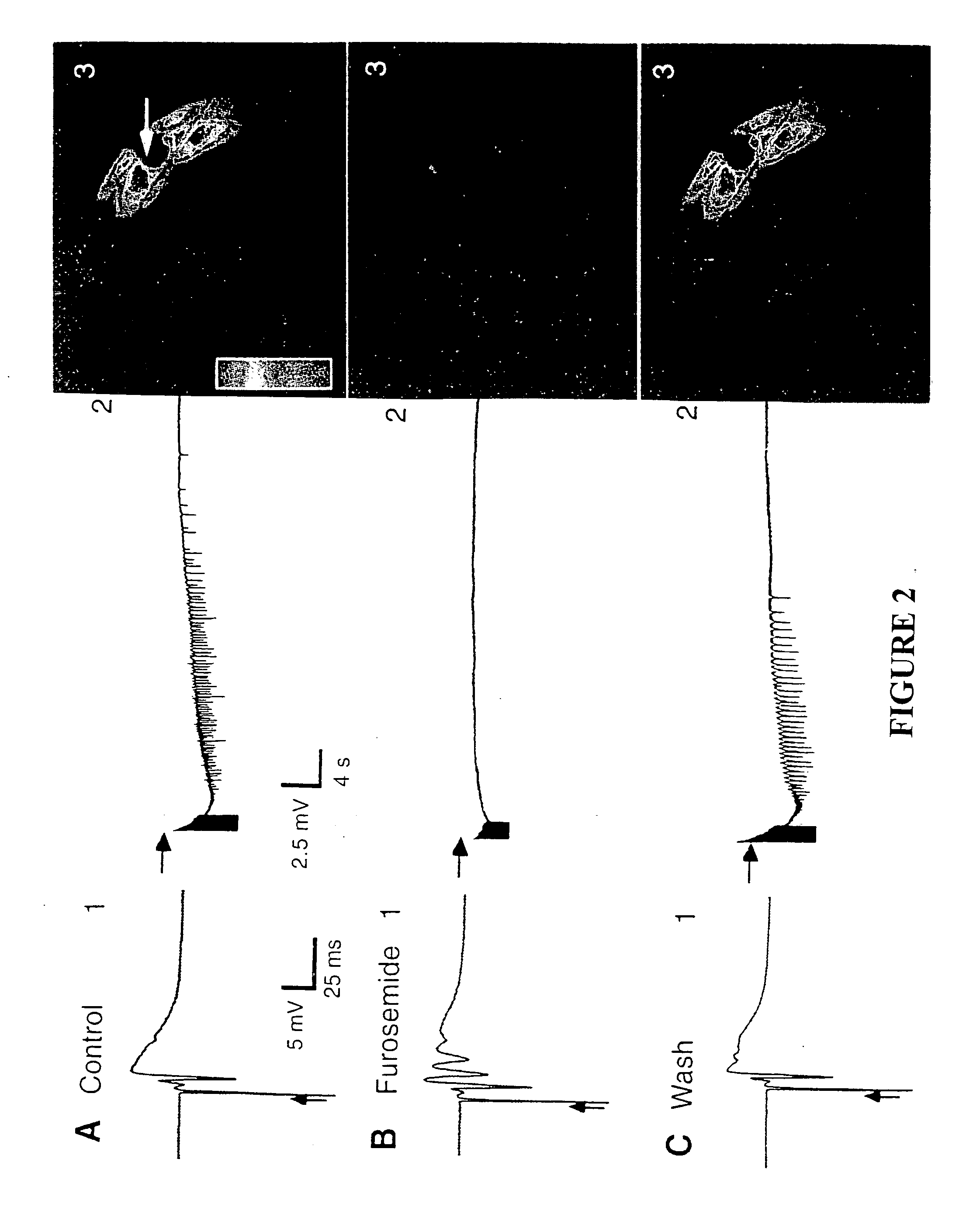Methods and systems for assessing biological material using optical detection techniques
a biological material and optical detection technology, applied in the field of optical or spectroscopic detection, can solve the problems of insufficient high throughput screening of biological materials, inability to accurately predict the response and side effects observed in human clinical trials, and inability to scale up to provide the high throughput screening necessary to test the numerous candidate compounds generated by traditional and computational means. , to achieve the effect of high throughpu
- Summary
- Abstract
- Description
- Claims
- Application Information
AI Technical Summary
Benefits of technology
Problems solved by technology
Method used
Image
Examples
example 1
[0100] Sprague-Dawley rats (male and female; 25 to 35 days old) were prepared as described in Aghajanian, A. K. and Rasmussen, K., Synapse 31:331, 1989; and Buckmaster, P. S., Strowbridge, B. W., Schwartzdroin, P. A., J. Neurophysiol. 70:1281, 1993. In most hippocampal slice experiments, simultaneous extracellular field electrode recordings were obtained from CA1 and CA3 areas. For stimulation-evoked afterdischarge (13 slices, 8 animals), the concentration of Mg2+ in the bathing medium was reduced to 0.9 mM. A bipolar tungsten stimulating electrode was placed on the Schaffer collaterals to evoke synaptically driven field responses in CA1; stimuli consisted to 100 to 300-μs-duration pulses at an intensity of four times population-spike threshold. Afterdischarges were evoked by a 2-s train of such stimuli delivered at 60 Hz. Spontaneous interictal-like bursts were observed in slices treated with the following modifications or additions to the bathing medium: 10 mM K+ (6 slices; 4 anim...
example 2
[0105] This example illustrates optical changes indicative of neuronal activity in a human subject by direct cortical electrical stimulation. Surface electrical recordings (surface EEG, ECOG) were correlated with optical changes. Intrinsic optical changes were evoked in an awake patient during stimulating-electrode “calibration.” Four stimulation trials were sequentially applied to the cortical surface, each stimulation evoking an epileptiform afterdischarge episode. A stimulation trial consisted of: (1) monitoring resting cortical activity by observing the output of the recording electrodes for a brief period of time; (2) applying an electric current via the stimulation-electrodes to the cortical surface at a particular current for several seconds; and (3) monitoring the output of the recording electrodes for a period of time after stimulation has ceased.
[0106] The cortex was evenly illuminated by a fiber optic emr passing through a beam splitter, controlled by a D.C. regulated po...
example 3
[0117] Stimulation mapping of the cortical surface was performed on awake human patients under local anesthesia to identify sensory / motor cortex and Broca's areas. The illumination source and optical detection device and processing techniques used were the same as those described in Example 2. During three “tongue wiggling” trials, images were averaged (32 frames, 1 sec) and stored every 2 seconds. A tongue wiggling trial consisted of acquiring 5-6 images during rest, then acquiring images during the 40 seconds that the patient was required to wiggle his tongue against the roof of his mouth, and then to continue acquiring images during a recovery period. The same patient was then required to engage in a “language naming” trial. A language naming trial consisted of acquiring 5-8 images during rest (control images—the patient silently viewing a series of blank slides), then acquiring images during the period of time that the patient engaged in the naming paradigm (naming a series of o...
PUM
 Login to View More
Login to View More Abstract
Description
Claims
Application Information
 Login to View More
Login to View More - R&D
- Intellectual Property
- Life Sciences
- Materials
- Tech Scout
- Unparalleled Data Quality
- Higher Quality Content
- 60% Fewer Hallucinations
Browse by: Latest US Patents, China's latest patents, Technical Efficacy Thesaurus, Application Domain, Technology Topic, Popular Technical Reports.
© 2025 PatSnap. All rights reserved.Legal|Privacy policy|Modern Slavery Act Transparency Statement|Sitemap|About US| Contact US: help@patsnap.com



